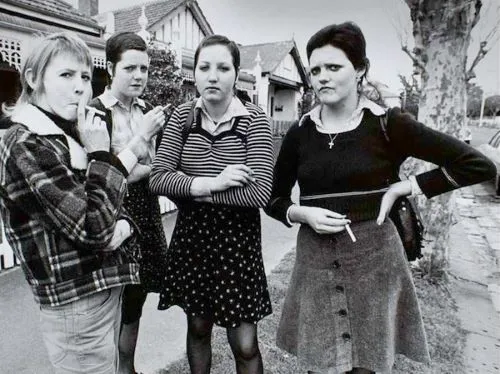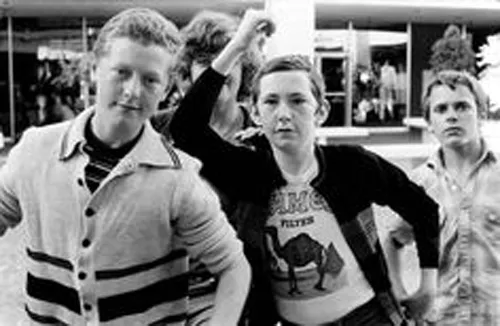Introduction
If you, like me, grew up Asian in Australia, you might think you already know a thing or two about, well, growing up Asian in Australia. Our stories can be pretty similar—just have a scroll through the ‘subtle asian traits’ Facebook group, or have a conversation with literally any Asian Australian about their parents.
At the same time, it’s also important to recognise that everyone’s experiences are diverse, especially given how broad an identity ‘Asian’ can be. Also important is to recognise how broad and intersectional identity can be in general—intersectional meaning that race isn’t the only thing that defines any one of us. Things like gender, socio-economic status, ability, sexual orientation and religion can also be really central, for example. Each of these things can impact the way we navigate the world.
Covering a broad range of these stories is Alice Pung’s anthology, Growing Up Asian In Australia. Some of the contributors in this volume include Sunil Badami, Matt Huynh, Bon-Wai Chou, Diana Nguyen, Michelle and Benjamin Law, and Shaun Tan, and already this cross-section is fairly diverse in nature. You can also click on their names to find out a bit more about each of their work. I think this is worth a few minutes, just to get acquainted with the sheer range of Asian-Australian creatives who are represented in this book, and to locate their work within the themes they write about—in other words, having a think about the ways that cultural heritage, or experiences with family, or economic hardship permeate their work, both in the anthology and in their lives outside it.
The anthology is (perhaps quite helpfully) divided into sections which revolve around key themes, which is also going to inform the structure of this guide. I’ll be using this guide to go through an exercise that I found really helpful when learning the text, which involves:
- taking two stories per section and drawing up some dot-point similarities and differences
- translating two of those points into paragraphs, a bit like a ‘mini-essay’
We’ll go through some an example of what this might look like, and why it’s a helpful exercise to try.
Before we start diving into Growing Up Asian in Australia, I'd highly recommend checking out LSG's Ultimate Guide to VCE Text Response.
Strine (Badami & Tseng)
Strine is what’s called a syncope, a shortened way of pronouncing Australian (a bit like ‘Straya’)—it refers to Australian English as it’s spoken by locals. This section of the book is all about language, and about the difficulties of juggling two languages growing up, and Badami and Tseng’s stories are great examples of this.
1. Similarity: connections to one’s mother tongue fade over time. Tseng recounts how, one by one, she and her sisters stopped learning Chinese as they progressed through their Australian education. Badami on the other hand compromises his name which stood out as too Indian when he “just wanted to fit in.”
2. Similarity: for ‘third-culture kids’, losing knowledge of their language also strains their relationship with their forebears. Badami’s mother is shocked to hear the anglicisation of his name despite the significance it carrie for her (“she spat my unreal new name out like something bitter and stringy”), and Tseng describes the experience of communicating with her father in “Chinglish” so that they can both understand each other.
3. Difference: language can be an internalised, personal experience, or a highly exposed and interpersonal one. While Tseng feels her loss of her language as a “sense of shame, a vague unease”, Badami is almost bullied into changing his name, “Sunil? Like banana peel?”
The Clan (Law & Chau)
This section delves into the complex ties that hold migrant families together. Chau’s poems are starkly different to Law’s story, so it’ll be interesting to compare how these different narrative forms work to explore those ideas.
1. Similarity: it can take at least one generation for migrant families to dig their roots into their new home. While Law’s parents are proud tourists at Queensland theme parks, he and his siblings “groan” at their comportment. Chau’s poem ‘The Firstborn’ traces his ancestry forward until he arrived, “an ABC” and his son “by amniotic sea”, both of them born into Australia.
2. Similarity: family dynamics are still traditional and therefore gendered. Law notes how his mother’s health suffered when divorcing his father, and Chau notes that the women members of his family were “cast off” the family tree “as if they were never born.
3. Difference: family history and heritage can vary in importance. Chau’s family traces back “twenty-eight generations” of history, whereas Law’s family very much lives in the present, the only tie to older generations being his “Ma-Ma”, or grandma.
4. Difference: families show their love in different ways. Whether it’s dedicating a poem to his son about his life as one of “ten thousand rivers” of Chinese diaspora into the Australian sea, or taking the kids to theme parks on weekends, all sorts of affection can hold families together.
Putting it together
So I’ve tried to choose two sections (and four stories) that are all a bit different to try and mix it up and get some rich comparative discussion out of these. You might be studying this text alone, but even as one text, remember that there’s a lot of diverse experiences being represented in it, so discussing how stories connect, compare and contrast is just as important as discussing the content of individual stories themselves.
If we do a mini-essay, we might as well go about it properly and pick some sort of contention. Without a fixed prompt though, it might be easier to start with those dot points and pick which ones we want to write out and string together. Let’s pick two—connections to mother tongue fading over time (Strine similarity 1) and digging roots into Australia over time (The Clan similarity 1). A contention covering these points might look like:
While second generation migrants may struggle with loss of culture, they also constitute a unique and significant part of the diaspora.
An example
Many migrants lose connections to their heritage over time, and these connections are often in the form of language. Particularly for Asian migrants, there is not as strong a need to preserve their mother tongue in the English-speaking Australia, and as such their knowledge of those languages can be easily lost. Ivy Tseng, for instance, recalls how she was never able to “grasp the significance” of learning Chinese as a child, and eventually she and her sisters would prioritise “study” and other academic pursuits over learning Chinese. Because tertiary study and education as an institution generally carry a lot of weight in migrant cultures, there is often a compromise made at the expense of heritage and language. These compromises can come from other factors as well, particularly the group dynamics of being in white-dominated Australia. Bullying is a frequent culprit, and Badami for example is indeed peer-pressured into resenting—and ultimately anglicising—his name, “Sunil? Like banana peel?” More generally speaking, a sense of shame for one’s difference is a common part of the migrant experience—Law experiences it as well at theme parks, where he and his siblings attempt to “set [them]selves apart” from the faux-pas of their parents. Not always an intentional goal, but a general willingness to compromise connections to heritage underscores many Asian Australian migrant stories, particularly of second-generation migrants.
However, the extent to which migrants feel socially integrated in society shifts generationally and over time as well. Second generation migrants are thus unique in that they have the closest connection to their heritage while also initiating this process of integration. Law and his siblings exemplify this, with their “Australian accents” and “proper grammar and syntax.” While some loss of their native Cantonese takes place, they are also the first in their family to sound Australian, one step closer to being Australian. They constitute part of the distinct, third culture of “ABC”—Australian-born Chinese—to which Chau alludes in his poem, ‘The Firstborn’. Distinct from first-generation migrants, ABCs are a product of diaspora and spend their formative years immersed in the Australian way of life. Chau’s poem goes on to highlight how sizeable this demographic now is—“the sea is awash with the unfathomable Chinese sons.” Thus, we can see how ABCs, or second generation Asian migrants, represent a unique and significant social group exemplified by great compromise, but also great change.
Why is this useful?/How can I apply this?
I like this exercise because it gets you thinking creatively about the key implications of the stories. Within a section or theme, you want to identify similarities in how both stories contribute to our understanding of that theme. You also want to identify differences to explore how stories can be unique and nuanced, which will provide your essay with more depth when you ultimately need it. Then, putting it all together helps you synthesise new connections between themes.
For an analytical study of this text, you’d flesh out those ideas until they become paragraphs, introducing relevant evidence and mixing it up with explanatory sentences as you go. Explanatory sentences keep you analysing rather than story-telling, and they usually don’t have any quotes—an example from above might be “because tertiary study and education as an institution generally carry a lot of weight in migrant cultures, there is often a compromise made at the expense of heritage and language.”
For a creative study, you’d take away those ideas and look at how else you might explore them in other stories. Feel free to challenge yourself for this; I remember falling back on more personal writing when studying this creatively, but don’t neglect other genres or forms! If second generation migrants are in fact more on their way to belonging, write a speculative story about how an apocalypse tests those connections to white Australians. I dunno, but don’t be afraid to really push the boundaries here and test the implications you draw from the stories.
Give it a go
Try it for some of these:
- UnAustralian? (Loewald & Law) and Leaving Home (Diana Nguyen & Paul Nguyen)
- Battlers (Dac & Law/Huynh) and Mates (Phommavanh & Ahmed)
- The Folks (Lazaroo & Tran) and Homecoming (Beeby & Larkin)
Growing Up Asian in Australia Essay Prompt Breakdown
Video Transcription
The essay topic we’ll be looking at today is short and sweet;
To belong is to sacrifice. Discuss.
The key terms are evidently “to belong” and “to sacrifice”, so these are the words and definitions that we’ll have to interrogate.
Belonging is a feeling of being accepted by someone or being a member of something, so we’d have to ask who is doing the accepting, and what are the writers seeking to be members of. On the other hand, sacrifice is loss, it’s giving something up—it’s implied that seeking belonging means you may have to navigate compromises to what you have, how you live, or maybe, who you are. Have a think about what sacrifices are made by whom, and why.
With that in mind, let’s brainstorm a contention. We usually want to avoid going fully agree or fully disagree to create a bit more ‘grit’ for the essay—and in this case, the prompt is pretty deterministic or absolute; it’s saying that belonging is all about sacrifice.
I’d probably argue that belonging is sometimes about sacrifice, and for migrant children they often give up some of their culture or heritage for Western lifestyle or values. That being said, belonging in these cases is probably more about synthesis than sacrifice—it’s about being able to negotiate and bring heritage into increasingly Australian ways of life.
The brainstorming section of writing a killer essay is where my THINK and EXECUTE strategy comes in. If you haven’t heard of it before, essentially, it’s a method of essay writing that emphasises the importance of really thinking about all aspects of a prompt and exploring all the different avenues you can go down. To be able to EXECUTE a well-reasoned, coherent and articulate essay that contains enough nitty-gritty analysis, you have to do enough THINKing to get some meat on the essay’s skeleton, so to speak. To learn more, check out my top selling eBook, How To Write A Killer Text Response.
In paragraphs, we could start by looking at some of the sacrifices people make in order to belong. The poem, ’Be Good, Little Migrants’ has a more of a cynical take on this, suggesting that migrant groups are expected to sacrifice economic mobility and even personal dignity in order to gain favour with locals: “give us your faithful service”, “display your gratitude but don’t be heard, don’t be seen.”
Economic sacrifices are seen across many stories, from the working class “decent enough income” in ‘Family Life’ to the failing business in ‘ABC Supermarket’. Other forms of sacrifice might be less material—for example Benjamin Law’s sacrifice of his Mariah Carey cassettes in an attempt to fit in at school from the story ‘Towards Manhood’. This example is interesting because it isn’t a cultural sacrifice, but a gendered one—it’s a good reminder that identity is always multi-layered.
For migrant children though, the sacrifices usually revolve around their race and culture. Diana Nguyen for example notes language as a key sacrifice: she quits Vietnamese school because she didn’t feel like she belonged with the grade ones in her class, and her ultimate “lack of interest in learning [Vietnamese] created a lasting barrier” between her mother and her. In Sunil Badami’s story, ‘Sticks and Stones and Such-Like’, the sacrifice is his name, as he Anglicises it to Neil. When his mother finds out, “she spat my unreal new name out like something bitter and stringy, too difficult to swallow.” The common denominator here is that Asians growing up in Australia often have to navigate sacrificing some of their heritage in order to belong in western society.
However, the challenges faced by the Asian diaspora growing up abroad are more complex and more nuanced than just sacrifice. More often than not, they’re required to synthesise a ‘third culture’ identity that balances their heritage with western values and lifestyles.
Diana Nguyen goes on to discuss her career trajectory in becoming a “working actor” in Melbourne’s entertainment industry, carving out a path for herself in spite of her parents’ disapproval, and going on to represent a new generation of Asian Australians in the media. The story ‘Wei-Lei and Me’ also points to this shifting demographic in Australia, as Gouvernel and her best friend stave off a racist primary school bully only to see their home change for the better as they grew up, with new restaurants from their home cuisines opening up. At the same time, they “had become what [they] thought [they] could never be: Australian,” describing a way of life in Canberra that is unmistakably Australian.
So, belonging isn’t necessarily all about sacrifice—it doesn’t mean you can’t pursue your passions or become ‘Australian’. Sure, sometimes sacrifice is necessary, but ‘third culture kids’ synthesise conflicting identities in order to belong.
Having arrived at the contention, let’s just have another think about the takeaway message - being able to bring other themes into an essay topic that only really raises one theme. To answer this topic fully, a good essay wouldn’t just discuss belonging and sacrifice, but it would also bring in discussion about family, friends, careers and cultures, just to name a few. Hopefully this is something you can translate into your own future work!
Conclusion
Growing Up Asian In Australia is an anthology with a lot to unpack, but there are plenty of unique stories with plenty of interesting links to be made. However you’re learning this text, being able to draw conclusions from stories and extrapolate them into your writing is a really important skill.
As you go, ask yourself about the implications: ‘so what?’ and ‘why?’. These sorts of questions will help you get richer insights and write about the anthology in a more interesting way.






















.jpg)